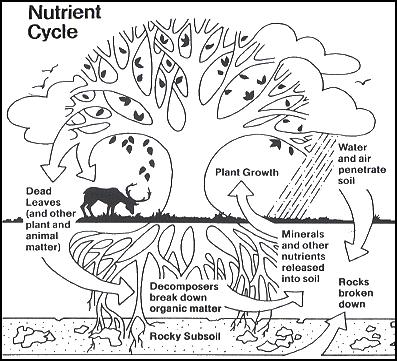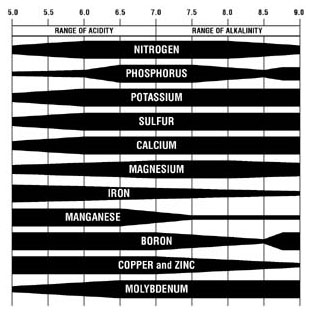Trees, like humans, have specific nutrient requirements for sustained growth and long-term health. Forest plants have the benefit of fallen leaves and branches decomposing on site creating a protective blanket which ultimately releases nutrients back into the soil. Often, landscapes have leaves and other organic material systematically removed, preventing the natural decomposition and resulting nutrient cycling process. When deficiencies occur, plants vitality may suffer and become susceptible to secondary issues like insects and disease. 
One of the most basic and easiest tree care practices available is to ensure soil conditions are as favorable as possible. Frequently, we recommend taking periodic soil samples for laboratory analysis. Soil tests are a valuable tool to gather critical information about the soil which supports trees and plants. The results provide a wealth of information about the soils sustaining your plants, such as organic matter, pH and level of essential elements. Based on this data, we can accurately formulate a nutrient maintenance plan to provide plants with the basic building blocks to maximize their genetic potential.
We use several techniques to improve soil growing conditions. A common technique is subsurface fertilization. The purpose of supplemental fertilization is to provide soil minerals that may not be readily available or are simply limited in urban and landscape soils. Appropriate mixes of nitrogen, phosphorus and potassium are injected into the soil in a liquid suspension. BTSE use custom blended fertilizers containing the micronutrients and humates often depleted in our area’s soils.
A basic and often neglected component of plant health care treatment is the proper mulching. Maintaining 2-3 inches of composted woodchips or mulch over a plant’s root system evens soil temperature, adds humates and nutrients, and prevents root competition from weeds and grasses that would otherwise be available.
Just as a durable house starts with a strong foundation, vigorous plants start with healthy soils. Nutrients deficiencies may occur for a number of reasons in urban landscapes. A fertilization program, as part of regular ongoing maintenance, can help alleviate problems common in the landscape and significantly improve overall plant health.

